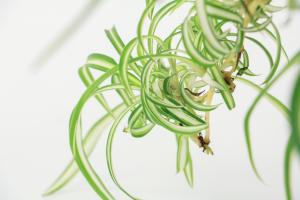How to Get Rid of Flies in Plant Pots
Flies can be an annoying and persistent problem, especially when they are buzzing around your plant pots. Not only do they make it difficult to focus on your gardening, but they can also transmit diseases and harm your plants. Fortunately, there are several effective ways to get rid of flies in plant pots without harming your plants or the environment. In this article, we will explore some of the best techniques for banishing these pesky insects.
Clean Your Plant Pots Regularly
One of the simplest and most effective ways to get rid of flies in plant pots is to clean them regularly. Flies are attracted to decaying organic matter, so any leftover soil or plant debris in your pots can serve as a breeding ground for these insects. To keep your plant pots free of flies, make sure to remove any dead leaves or flowers and dispose of them properly. You should also clean your pots with soap and water every few weeks to prevent any buildup of organic material.
Use Insecticidal Soap
An insecticidal soap can be an effective solution for getting rid of flies in plant pots. These soaps are made from natural insecticides that are derived from plants, such as pyrethrum, and work by breaking down the exoskeletons of insects, including flies. To use insecticidal soap, simply dilute it with water according to the instructions on the label, and then apply it to your plant pots. Be sure to follow the safety precautions on the label, as some insecticidal soaps can be harmful to humans.
Set Up Traps
Another way to get rid of flies in plant pots is to set up traps around your garden. You can make your own fly trap by filling a jar with water and adding a few drops of dish soap. Flies are attracted to the soap and will fall into the jar and drown. You can also use sticky traps, which are coated with a non-toxic, odor-free adhesive that attracts and traps flies. These traps can be placed around your plants, or you can hang them from branches or other structures.
Bring in Natural Predators
Flies are a natural food source for many animals, including birds, bats, and insects like ladybugs and lacewings. By introducing these natural predators into your garden, you can reduce the population of flies in your plant pots. For example, you can plant flowers that attract butterflies, which in turn attract predatory wasps and flies. You can also install birdhouses or bat boxes to encourage these animals to take up residence in your garden.
Conclusion
Flies can be a frustrating problem to deal with, but with the right techniques, you can banish them from your plant pots and enjoy a healthier, more vibrant garden. By cleaning your pots regularly, using insecticidal soap, setting up traps, and bringing in natural predators, you can keep your plants healthy and free of pests. With a little effort and persistence, you can create a garden that is both beautiful and free of flies.

 how many times do yo...
how many times do yo... how many planted tre...
how many planted tre... how many pine trees ...
how many pine trees ... how many pecan trees...
how many pecan trees... how many plants comp...
how many plants comp... how many plants can ...
how many plants can ... how many plants and ...
how many plants and ... how many pepper plan...
how many pepper plan...































